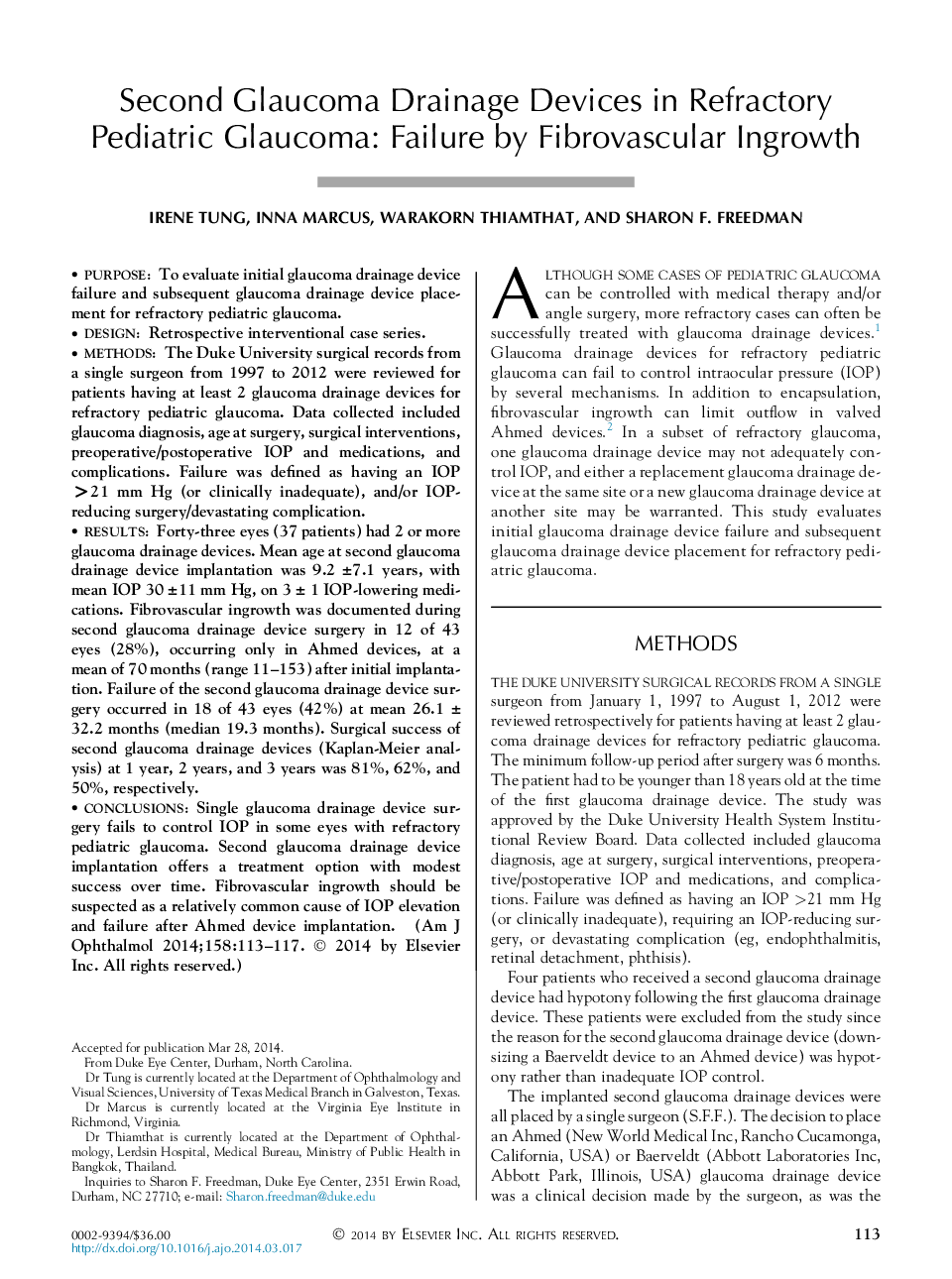| Article ID | Journal | Published Year | Pages | File Type |
|---|---|---|---|---|
| 4002129 | American Journal of Ophthalmology | 2014 | 5 Pages |
PurposeTo evaluate initial glaucoma drainage device failure and subsequent glaucoma drainage device placement for refractory pediatric glaucoma.DesignRetrospective interventional case series.MethodsThe Duke University surgical records from a single surgeon from 1997 to 2012 were reviewed for patients having at least 2 glaucoma drainage devices for refractory pediatric glaucoma. Data collected included glaucoma diagnosis, age at surgery, surgical interventions, preoperative/postoperative IOP and medications, and complications. Failure was defined as having an IOP >21 mm Hg (or clinically inadequate), and/or IOP-reducing surgery/devastating complication.ResultsForty-three eyes (37 patients) had 2 or more glaucoma drainage devices. Mean age at second glaucoma drainage device implantation was 9.2 ±7.1 years, with mean IOP 30 ±11 mm Hg, on 3 ± 1 IOP-lowering medications. Fibrovascular ingrowth was documented during second glaucoma drainage device surgery in 12 of 43 eyes (28%), occurring only in Ahmed devices, at a mean of 70 months (range 11–153) after initial implantation. Failure of the second glaucoma drainage device surgery occurred in 18 of 43 eyes (42%) at mean 26.1 ± 32.2 months (median 19.3 months). Surgical success of second glaucoma drainage devices (Kaplan-Meier analysis) at 1 year, 2 years, and 3 years was 81%, 62%, and 50%, respectively.ConclusionsSingle glaucoma drainage device surgery fails to control IOP in some eyes with refractory pediatric glaucoma. Second glaucoma drainage device implantation offers a treatment option with modest success over time. Fibrovascular ingrowth should be suspected as a relatively common cause of IOP elevation and failure after Ahmed device implantation.
